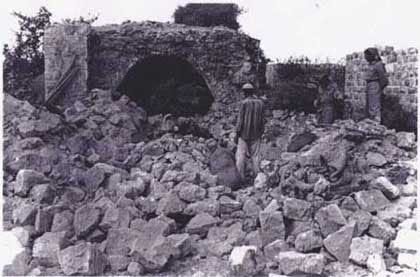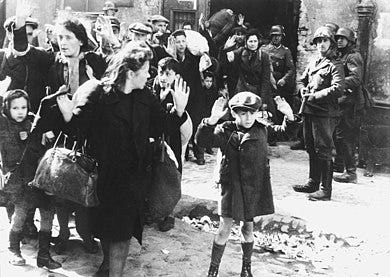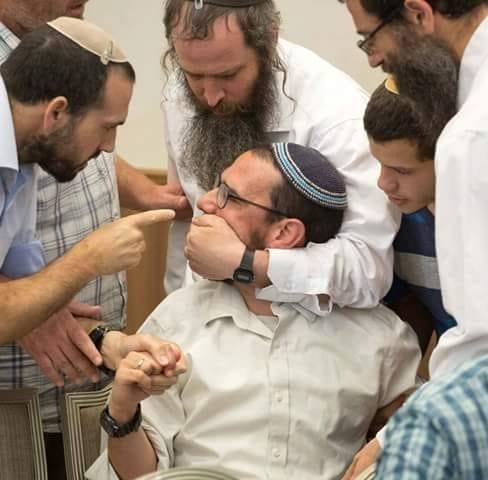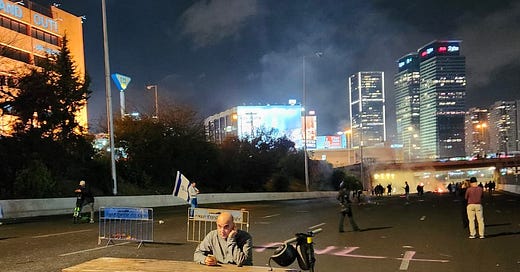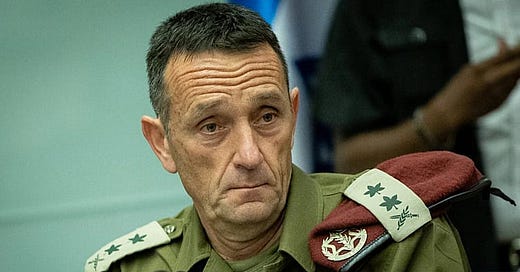

Discover more from Israel from the Inside with Daniel Gordis
On the anniversary of the Qibya calamity
Countries do have the capacity to learn; that, too, is worth noting ...
On October 13, 1953, Susan Kanias, aged thirty-two, and her three young children were sound asleep in their home in the small town of Yehud, just north of Lod, near the narrowest section of Israel.1 A mere nine miles separated the Mediterranean Sea on the west and the armistice line on the east. Located almost mid-way between the sea and the border, Yehud was less than five miles from the armistice line, and like many villages at that point in Israel’s history, eminently vulnerable.
Between 1951 and 1956, several hundred Israelis were killed by fedayeen (Arabic for “self-sacrificers”) infiltrators, and many more were wounded. According to some estimates, there were thousands of such infiltrations into Israel, crossing the porous border, every year.
In the dark of night on October 13 (making this week the anniversary of those events), Palestinian infiltrators crossed the border and made their way to her home. They lobbed a grenade into her apartment, killing Susan and two of her children, and wounding the third.
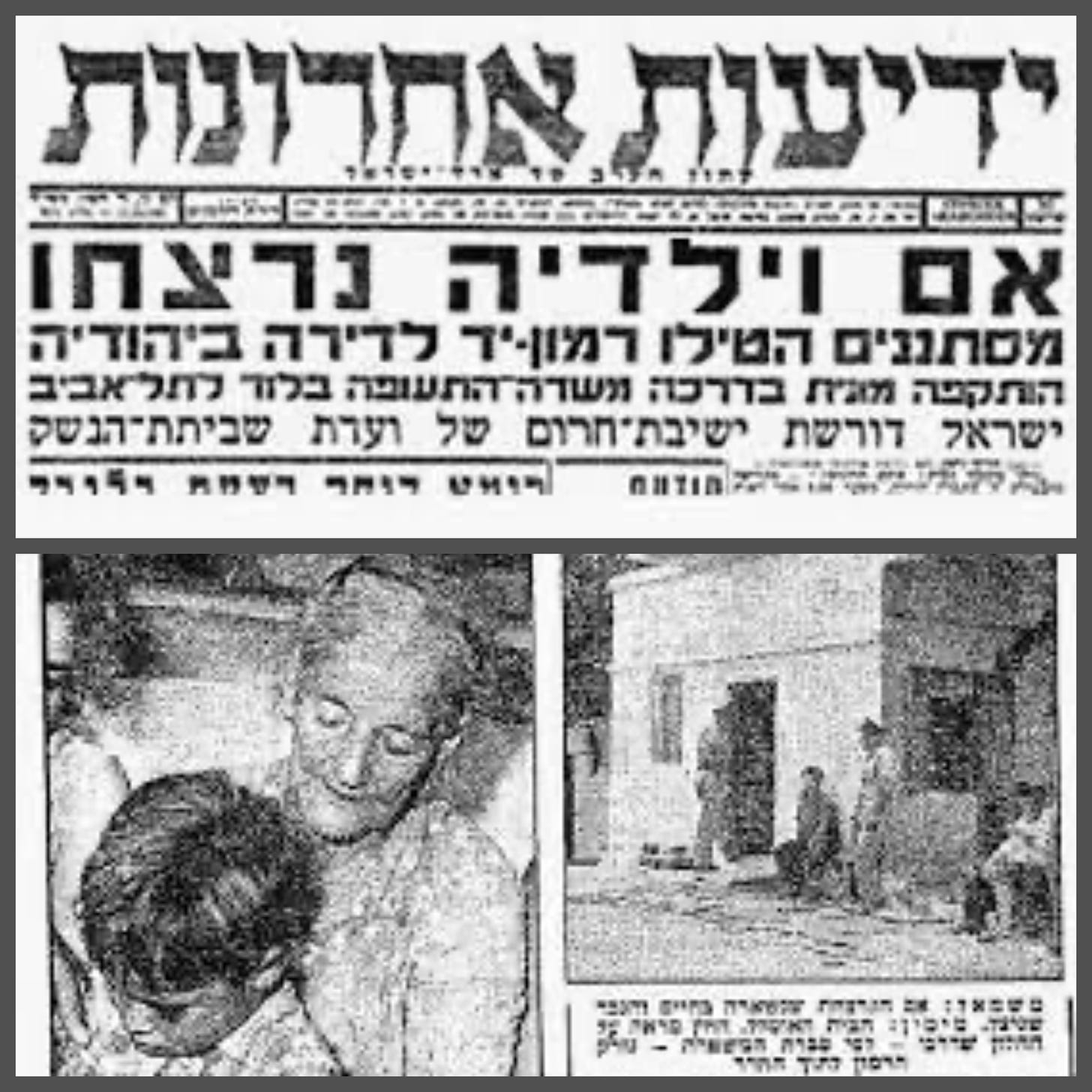
For a long time, there had been a growing sense in the IDF that to end these attacks, Israel (which was merely five years old at the time and vulnerable in numerous ways) was going to have to hit back, and hit back hard. So, in early 1953, the IDF had begun to train a small force of hand-picked fighters dedicated to the swift and ruthless punishment that some Israeli leaders believed was necessary to bring a modicum of quiet to Israel’s borders. It formed Unit 101, composed largely of choice volunteers, some of whom had served in the Haganah’s elite Palmach unit before independence. The unit was put under the command of Ariel Sharon.
The night after Susan Kanias and her children were murdered, Unit 101 got the green light to strike back. The elite, highly trained soldiers made their way to the Jordanian border village of Qibya, located just over the armistice line. The Israeli historian, Benny Morris, has described what happened next:2
The main body of IDF troops . . . prepared some 700 kilograms of explosives for detonation. Working with pocket flashlights and unhindered by Jordanian interference, the sappers proceeded to demolish 45 houses. The destruction took some three hours, lasting from 00:30 to 03:20. The troops failed to search the houses for inhabitants, some of whom hid in cellars and attics. It is possible that, at that stage, the troops believed that there was no one (alive) in the houses. Altogether, some 50–60 of the inhabitants died, both during the takeover of the village and in the demolitions. . . . After sifting through the rubble, the Jordanians announced that 69 (or 70) persons had been killed, most of them women and children.
As outraged as many Israelis were by the murder of Kanias and her children, they had sadly grown accustomed to such events. What was new, and what many could not abide, was how Israel had responded. Dozens of women and children, utterly innocent of the attack on Kanias, dead simply because Israel sought retribution to make a point?
Professor Yeshayahu Leibowitz, the eminent (and always controversial) Orthodox scientist and philosopher, responded with fury, arguing that Qibya is what happens when a people sees its state’s existence as sacred. (Leibowitz would be among the very first, in the days immediately after the Six Day War, to insist that Israel return the West Bank to Jordan, for occupying all those Palestinians who lived there, he said, would irrevocably callous Israel’s soul). Israel might be fabulous, or terrible, he argued throughout his career, but it had zero religious significance. It was a state, like any other. Confuse Israel with some divine plan, he warned, and you get Qibya, the antithesis of what Judaism was meant to stand for.3
Not surprisingly, many people in the Orthodox establishment disagreed. Rabbi Shaul Yisraeli, one of the revered leaders of religious Zionism at the time, argued that to the contrary, Jewish law not only permitted, but actually required, acts of revenge if that was what was necessary to keep Jews safe. Using somewhat tortured legal logic, he argued that Qibya was thoroughly in keeping with Jewish law. The death of innocent children, while unfortunate, was not forbidden.
Yisraeli, though, hardly occupied the lowest rung on the moral ladder when it came to defending the operation. Prime Minister Ben-Gurion was keenly aware that the Qibya massacre had unleashed a firestorm in Israel, in the international community and even among American Jews. (As Abba Eban would later recall, Qibya “brought our international standing to the edge of the abyss …. This operation was the first since the establishment of our state that world Jewry refused to identify with …. Even Deir Yassin did not evoke such nausea ….”4) Ben-Gurion thus sought to distance his government from the attack, arguing that no military units had been ordered to carry it out, but that instead, marginal groups of Israelis, such as Jews from North Africa and Holocaust survivors had had enough of the infiltrators’ raids, had taken up arms and on their own, had attacked Qibya.
As ludicrous as Ben-Gurion’s claim was, it was even more offensive. Ben-Gurion had never had high regard for the (darker skinned) Jewish immigrants from North Africa, whom he considered culturally inferior, or for the Holocaust survivors, who (because they were seen as weak for not having fought back against the Nazis, and instead, went like “sheep to the slaughter”) were the antithesis of the new Jew that Israel was intent on fashioning. Now, not only had Ben-Gurion done everything he could to keep both groups relegated to the margins of Israeli society, he actually blamed them for actions that—as he knew well—had actually been committed by the “new Jews” of whom he was so proud.
As for Ariel Sharon (who, decades later, would be held responsible for the massacre at the Sabra and Shatila refugee camps, but would even later pull Israel out of Gaza), he was thoroughly unrepentant, but at least honest. “Qibya fell,” he said, “and with it, at least for us, what also fell was the myth of the Arab village that could not be defeated.”
We’ll come back to Sharon’s comment in a moment.
And see the bottom of this posting for a link to a Toldot Yisrael interview with Ahron Davidi, one of the paratroopers who participated in the Qibya events, and in time rose high in the pyramid of the IDF command.
Sixty-eight years after the carnage at Qibya, given all that has been written about it, does there remain anything worthy of discussion? Much of the historical record remains unclear. There are conflicting versions of the orders that were given, conflicting accounts of whether the soldiers had any reason to believe that there were people in the houses, and more.
But we are not going to solve here what archival historians have been unable to settle for decades.
What we can do, though, is to ask what seem to me to be two critically important questions.
(1) How are we to explain the behavior of those men? Were they just evil, or might there be some additional lens through which we have to see the events?
(2) Did Israel learn anything from Qibya? Does Israel’s conduct of its conflicts today manifest any-long term takeaways from an operation that should never have happened?
How are we to explain the soldiers’ behavior?
It is easy, but much too facile, to say that the men who carried out the operation were simply evil. We know, in fact, that most were not. Many were horrified by what transpired that night; some refused to participate in future operations of Unit 101. The brass intuited that things had gone too far, as well. In 1954, Unit 101 was merged with a paratrooper battalion. If that is the case, how are we to explain what transpired?
To explain, of course, is not to excuse. To explain is merely to seek to understand. And to do that, I think it’s worth recalling that Qibya took place in 1953. One way of thinking about 1953 is that it was five years after Israel’s creation. But another is that it was merely eight years after Auschwitz.
From its earliest days, Zionism’s most powerful orators and writers had been repulsed by ceaseless murder of Jews without consequence for the murderers. After the Kishinev pogrom of 1903, for example, Hayim Nachman Bialik wrote his poem “In the City of Slaughter,” savaging, ironically, not the marauding murderers and rapists, but instead, the Jews who, though descended from the Maccabean warriors, now “hid like roaches” and “died like dogs.”5
Come now, and I will take you to their hiding places
Outhouses, pigpens, other putrid places.
See with your own eyes where they hid
Your brothers, the sons of your people and these grandchildren of the Maccabees
….
They fled like rats, hid like roaches
and wherever they were found, they died like dogs
The next morning, the surviving son went out
and found his father’s desecrated corpse
Why are you weeping, O son of Man, and why bury
your face in your palms? ….
Central to Zionism’s ethos was the belief that the endless exile, torture, raping and killing of Jews simply had to cease. Zionism was a Jewish version of “don’t tread on me,” the American ethos that first emerged in South Carolina in 1775. It was time end the savaging of the Jews, time to put an end to the role of the Jews as “victims on call,” waiting for the next outbreak.
Some background: In 1775, Christopher Gadsden, a South Carolina delegate to the Continental Congress, designed a yellow flag with the rattlesnake and the words “don't tread on me” as the flag for a flagship named the Alfred. The symbol later became the the seal of the Marine Corps. Two and a half centuries later, the Tea Party (named after the Boston Tea Party), adopted “don’t tread on me” as its motto.
But the Jewish state had not ended the pattern of Jews waiting, like sitting ducks, to be killed. Susan Kanias’s death had proven that. The UN had voted to create the State, but the Arabs had attacked. The Jews had repulsed the Arabs, there were armistice lines, but still, Arabs kept crossing the border to steal, to burn, to ruin and to murder. Would it never stop? One can, without in any way excusing what happened in Qibya, understand the rage that might well have led to a raid that was meant to say, “Don’t tread on us.”
There’s no way of understanding Israel, even today, without understanding that rage. When Israel goes to war with Hamas, why does even the Israeli left not protest the bombing of Gaza? Is the Israeli left not really left? Not really humanist? Or are they, too, tired of their children being targeted by rockets, of living with a safe room always at the ready?
You can tell a lot about Israeli leaders by what they have on the walls of their office. Natan Sharansky, for example, in every office of his that I’ve seen, had a photograph of Andrei Sakharov and an ariel shot of the Old City of Jerusalem and the Temple Mount, gorgeous under a dusting of snow. Another prominent Israeli politician (who I won’t name here), still in the government, has this photograph as the only item on his wall. It says everything about his view of what Israel was meant to do: it was meant to stop this, no matter what it takes:
That, no matter what we may think of his comment, is likely what Ariel Sharon meant when he said that what had fallen at Qibya was the myth of the Arab village that could not be defeated. There were no enemies of the Jews, he believed as a matter of principle, who could not be defeated, who did not need to be defeated.
Did Israel Learn Anything from Qibya?
After Israel’s latest round of fighting with Hamas in May, IAF pilots spoke at great length about the number of bombing raids over Gaza that had been called off at the very last minute because of intel that there were civilians in the building or near it. These pilots spoke not with frustration, but matter of factly: this is how we do it.
It’s now well known that before Israel bombs buildings in Gaza, it sends SMS’s to residents telling them to leave, uses other methods to try to let them know they have a very few minutes to get out, and occasionally, uses a “knock on the roof” bomb, a non-lethal explosive that is meant to be the last warning, dropped enough in advance of the real bombs so residents can get out in time.
Colonel Richard Kemp, who commanded Britain’s forces in Afghanistan, came to Israel’s defense in 2015 when the United Nations Human Rights Council accused Israel of war crimes in its conduct of the 2014 war with Hamas. Kemp referred to a previous report that he and other military experts from countries that included the United States, Germany, Spain and Australia had written, in which they had said “None of us is aware of any army that takes such extensive measures as did the I.D.F. last summer to protect the lives of the civilian population.”6
Kemp noted that the UN report criticized Israel for its “knock on the roof” practice, noting that “No other country uses roof-knocks, a munition developed by Israel as part of a series of I.D.F. warning procedures, including text messages, phone calls and leaflet drops, that are known to have saved many Palestinian lives.”
That is not to suggest that Israel’s conduct of its operations in Gaza or anywhere else is beyond critique. It’s not, obviously. But one way of thinking about Kemp’s comment is to see it in light of Qibya. If he is right that neither he nor his military colleagues was “aware of any army that takes such extensive measures as did the I.D.F. … to protect the lives of the civilian population,” then, the grinding conflict notwithstanding, perhaps it is fair to say that horrific though Qibya was, Israel carries with it the lessons of that terrible night to this day?
Reasonable minds will read this differently.
I think of a long arc stretching from Qibya in October 1953 to Gaza in May 2021. As Bialik noted, the Jews’ not being actors in history was a calamity. That leaves us the choice of continuing to watch history from the side waiting for the next calamity, or embracing the messiness that history always entails, including the painful mistakes that we, like everyone else, are invariably going to make.
But that’s only true as long as there’s an arc, as long as we are honest about who we are and who we need to be. As long as the State of the Jews strives to be worthy of being known as “the Jewish state,” even horrific memories like Qibya can instill both profound regret, and no less important, a determination—that we have already partly realized—to continually do better.
What did the guy in the middle of this photograph do to merit being silenced by the others in the photograph? He’s an Orthodox rabbi, who is speaking out about what he considers to be “Israel’s greatest moral stain.”
What is that stain, as far as this rabbi is concerned? It’s not Qibya or the way Israel conducts the conflict. In this week’s podcast, available soon to subscribers, we’ll hear him discuss why he is so passionate about his cause.
In the meantime, here is an excerpt of our conversation. The full conversation will be posted on Thursday, available to paying subscribers.
Quite a few people who heard last week’s podcast with Deborah Harris, in which she mentioned critically important Israeli novels that are available in English, asked for a list of the books that she mentioned, as well as a list, in general, of the most important Israeli novels to read.
We’ll be providing that this Thursday, along with the podcast.
For Hebrew speakers, this is the relevant section of a Toldot Yisrael interview with Ahron Davidi, who participated in the Qibya events, and who here recounts his meeting Ariel Sharon and the events that followed. Davidi, in a storied military career, rose to the high ranks of the IDF.
As I’ve mentioned before, nothing brings to life the history of Israel’s early years better than Toldot Yisrael. Since 2007, Toldot Yisrael has been interviewing the members of Israel’s 1948 generation in order to capture and preserve the epic story of Israel's founding before it is too late. So far, its team has interviewed more than 1,200 of Israel's founders and recorded over 4,000 hours of footage. There is quite a bit of material subtitled in English.
Our twitter feed is here; feel free to join there, too.
Most of this account is taken from my Israel: A Concise History of a Nation Reborn.
Benny Morris, Israel’s Border Wars, 1949-1956 (Kindle locations 3123-3128).
The sources here are all available in numerous locations. A very helpful collection of them with thoughtful analysis can be found in Mikhael Manekin’s The Dawn of Redemption (Ivrit Books, 2021), Chapter Two [in Hebrew only].
https://www.cambridge.org/core/journals/modern-american-history/article/edge-of-the-abyss-the-origins-of-the-israel-lobby-19491954/E1690BDB5CA87C66B2B65D12CA1D716A
Translation is mine. There are many fine translations on line, easily findable.
https://www.nytimes.com/2015/06/26/opinion/the-uns-gaza-report-is-flawed-and-dangerous.html
Subscribe to Israel from the Inside with Daniel Gordis
Israel from the Inside is for people who want to understand Israel with nuance, who believe that Israel is neither hopelessly flawed and illegitimate, nor beyond critique. If thoughtful analysis of Israel and its people interests you, welcome!




